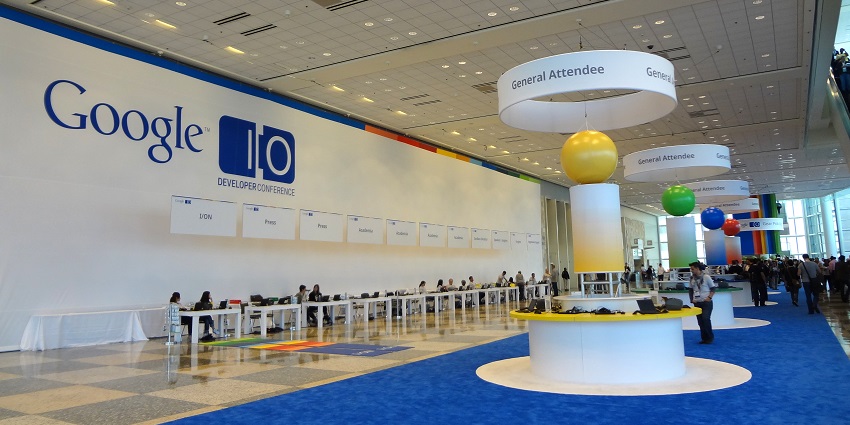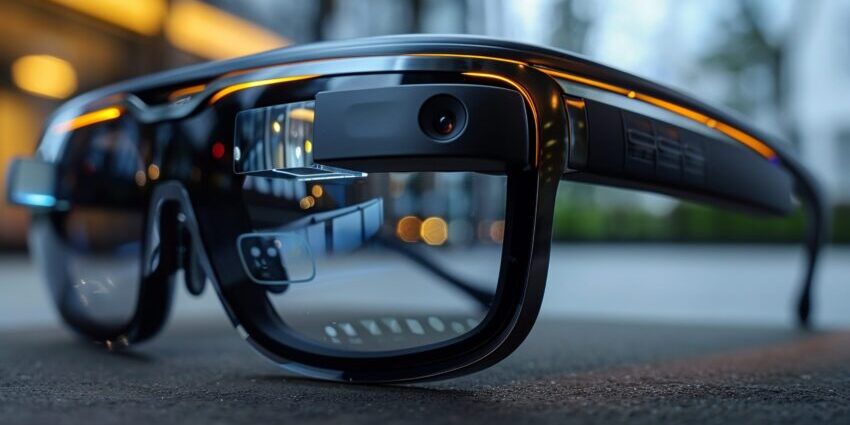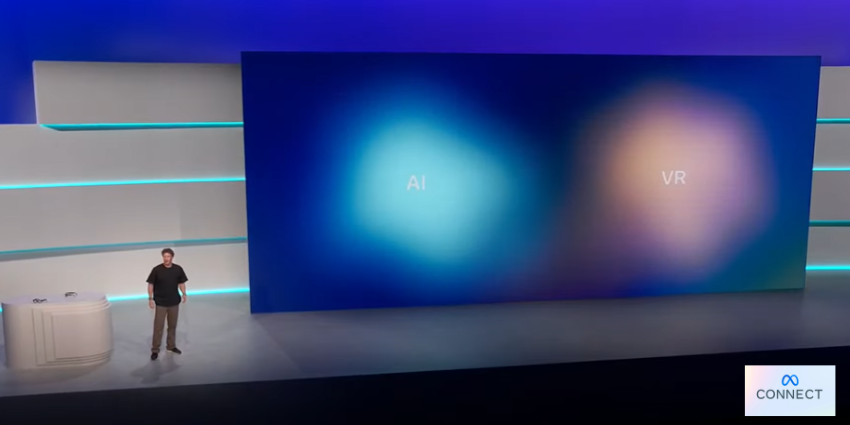Google I/O 2024 is one of the tech giant’s most exciting annual events for a few reasons. Not only does it give us plenty of updates on new devices and development tools from Google, but it’s also where the company announces some of its most exciting innovations.
In 2024, the focus was on Google’s increasing investment in AI. Google announced endless updates to its portfolio of Gemini products, new generative media models, and even enhancements to the Gemini app.
However, there were also some exciting announcements for those interested in the extended reality landscape. If you’ve been waiting with bated breath for a new set of Google Augmented Reality glasses or even more advanced AR features in Google apps, you’re in luck.
Here are the most exciting XR updates from this year’s Google I/O 2024.
Google I/O 2024 Introduces Geospatial AR to Google Maps
Google’s updates to the AR features of its popular “Maps” app gained perhaps the most attention at this year’s event. According to Google’s own announcement, the company believes location-based augmented reality experiences are revolutionizing the way we interact, engage, discover content, and more. As a result, they want to add their own layer of AR content to the Maps feature.
The announcement follows the introduction of the Geospatial Creator solution in 2023. This developer tool combines photorealistic 3D tiles from the Google Maps platform with ARCore, Google’s AR development kit.
Since then, developers have been able to design immersive, world-anchored geospatial experiences with Google, regardless of their coding prowess. More than 2,700 participants took part in Google’s Immersive Geospatial challenge to create their own solutions.
Now, developers will have even more opportunities to build highly immersive geospatial experiences, with a new pilot program, within the Maps environment. They’ll be able to create 3D content that’s visible from a mobile device using Lens in Maps and Street View.
All users will need to do is search for a location in Google Maps, and if the space has AR content available, they can tap the “AR Experience” button to start seeing overlaid content. Users will even be able to share their experience through URLs and QR codes.
What Innovators are Doing with Google Maps AR
Google is currently launching its Early Access Program in two locations: Singapore and Paris, as part of a six-month pilot. Already, the company has worked with the Singapore Tourism Board to expand the AR experiences available in “Merli’s Immersive Adventure.” This gives tourists a unique view of key points of interest throughout popular landmarks in the city.
For instance, you can view the local menus you can try at the Maxwell Food Center in AR or watch a ceremonial dragon dance from your smartphone screen.
Google’s partnership with Google Arts & Culture and Rock Paper Reality has sparked the creation of an app that allows people to see modifications to the Eiffel Tower, complete with historical insights.
Google I/O 2024 Updates to Creator Tools
We’ve already mentioned some of the updates Google made to its developer tools for AR experts and innovators at Google I/O 2024. Most of the biggest changes come to Google’s Geospatial tools. For instance, earlier this year, Google introduced updates to the Geospatial Creator platform that allows users to create and adjust anchors at scale within the Unity Editor using C#.
Additionally, the Places API taken from the Google Maps platform also allows developers to create their 3D content once, and anchor the same visuals in a range of locations. On top of that, Google shared that it was expanding the ARCore Geospatial API coverage to include access for India.
Google also shared that Geospatial Creator in Adobe Aero is now available to all users, which means you no longer have to sign up for a waitlist to gain access. Anyone worldwide can start building world-scale AR experiences on the platform instantly. Plus, Google has continued to upgrade anchor accuracy and localization speed for a more realistic, immersive experience.
Google I/O 2024: Project Astra and Starline
Other major updates this year included evolutions to Google’s AI/AR solution, Project Astra, and its immersive video conferencing solution, Project Starline.
Project Starline was originally announced at Google I/O 2021, as a new project designed to help people collaborate and share content in a more immersive format. Google said the project would leverage machine learning, spatial audio, computer vision, and light field displays to essentially enable holographic meeting experiences.
Project Starline enhances remote conversations by showcasing a 3D image of a coworker in front of a user with accurate depth and movement. It even tracks the caller’s position and creates animations in real time based on eye and head movements.
Since then, Google has largely kept this project on the back burner while it focused on other innovations. However, just before Google I/O 2024, the tech giant announced a collaboration with HP, intended to revive the project.
Very little information was revealed about when Project Starline would be completed and released commercially. Additionally, Google didn’t share many insights into what technologies companies would actually need to purchase to bring immersive conferencing into the office.
However, the company said that it is working to enable the system directly within the video conferencing tools companies already use, such as Google Meet and Zoom.
What About Project Astra?
Project Astra, defined by Google as the “future of AI assistants,” was promoted as more of an AI revolution than an AR development. However, it does seem to demonstrate Google’s greater focus on embracing the intersection of AI and AR technologies.
Clearly, Google’s competitors are already embracing this idea. Meta seems to be working on adding more AR and AI technologies to its smart specs, and XReal is already making waves in the industry.
According to Google, Project Astra will give users access to an intuitive AI assistant capable of completing a range of tasks, such as answering questions or interpreting content. The assistant, unsurprisingly, is based on Google’s Gemini technology.
The company primarily focused on what this solution could do on a smartphone. However, Google did showcase the AI running with a pair of prototype AR glasses, something it also frequently mentions on the Google Astra website.
Of course, there’s no guarantee that Google is working on a new set of AR glasses. The glasses could be a repurposed version of Google’s previously scrapped “Iris” specs, although the design does seem to be very different. Still, this could be an indicator that Google is reigniting its focus on the development of AR solutions in the future.
Google I/O 2024: What the Reveals Mean for Google XR
So, do the latest reveals from Google I/O 2024 mean anything for the tech giant’s future in the extended reality industry? At this point, it’s difficult to tell. For the most part, Google seems to be sticking to what it does best – enhancing its existing app portfolio, supporting developers with new development kits for XR, and building AI models.
However, the introduction of the AR pilot program, the focus on Astra, and Google’s new collaboration with HP on Project Starline do tell us something. If nothing else, Google clearly isn’t willing to ignore the XR revolution entirely.
This doesn’t necessarily mean we’ll see a Google Glass 2.0 release or any new wearables, although Google does seem to be committed to enabling new XR revolutions with its technology. Alongside the new Geospatial development tools introduced this year, the collaboration with HP, and upgrades to Project Astra, Google also announced its Wear OS this year.
It also shared that it’s continuing to build the foundations for an extended reality platform for Android devices, designed in collaboration with Qualcomm and Samsung.
From what I can tell, Google is still taking a backseat in the XR race, but there’s always a chance we could see some exciting developments in the months ahead.








